We occasionally link to goods offered by vendors to help the reader find relevant products. Some of these may be affiliate based, meaning we earn small commissions (at no additional cost to you) if items are purchased. Here is more about what we do.
Bagels, yep, we’re making bagels… but first, snow.
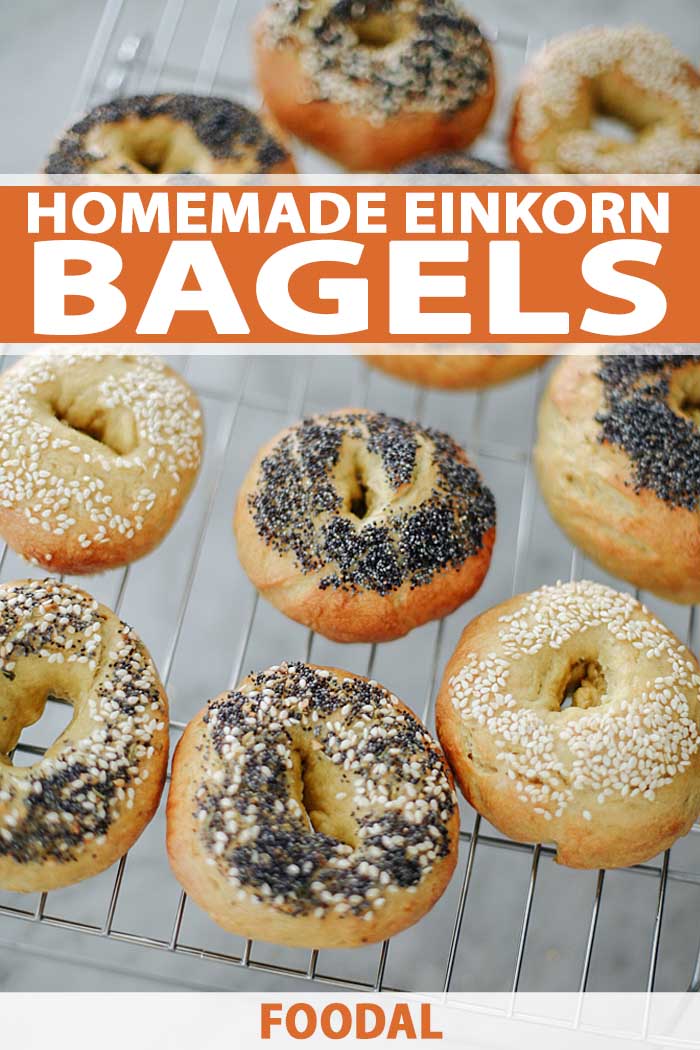
I hope I always remember how, the morning after a hard night, I woke to look out the bathroom window and gasp. Powdered sugar was falling from the sky. What initially looked, by all accounts, to be just another ordinary day, caused me to halt right there, with my bed hair and morning breath.
“Tim! It’s snowing!”

“I thought snow the wonder of the world. The snow-light filling the house with magic as the white flakes drifted down in windless silence, the splendour when the sun came out and hills and fields and trees sparkled under the arc of the blue sky, the thought of the things one did in the snow, tobogganing and snowballing and building a snowman; it was all ecstasy. And somewhere tucked away at the back of one’s mind was the knowledge that every crystal in the vast whiteness, though too small for the human eye to see, was fashioned like a flower or a star. How could snow not be the wonder of the world?” –Elizabeth Goudge, The Joy of the Snow

Likewise, to remember:
All three of us outside, clad in our odd array of rain boots, scarves, and baby sneakers, trails forming on the driveway, flakes landing on long lashes, cheeks turning bright pink.

Later that night, the baby in bed, the two of us making what’s called a yeast levain, tossing together einkorn flour and water and a pinch of yeast.
And, Saturday: baking bagels (not my idea), a half-day project for which I’d had little hope but appreciated great reward. Turns out it is such a revelation to watch flour and water become bread, to bake something you never thought you wanted to try, to look at the homemade einkorn bagels before you and, as co-creators, think they are good.

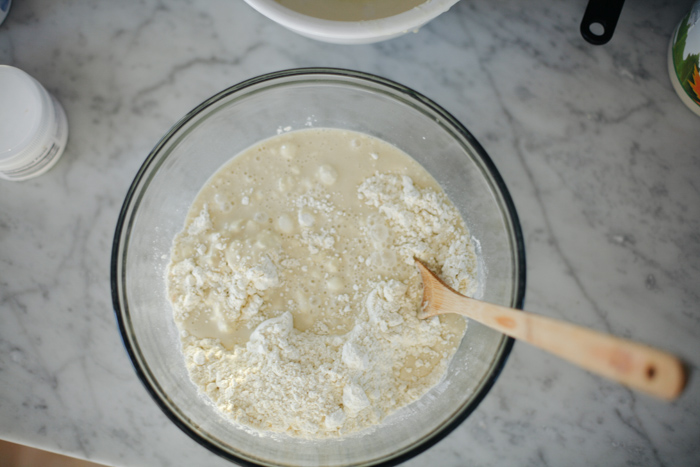
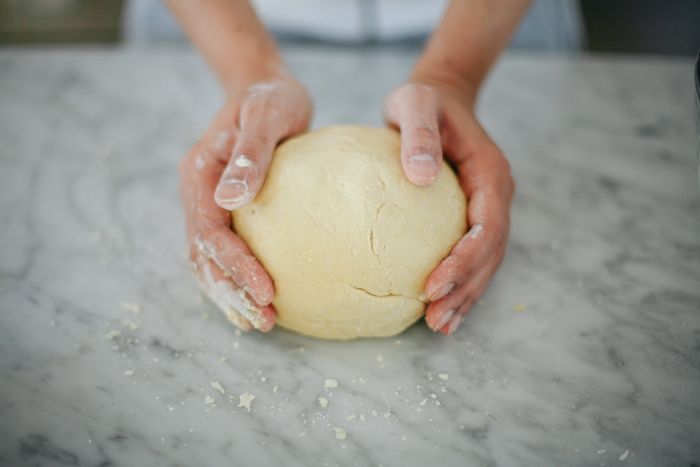

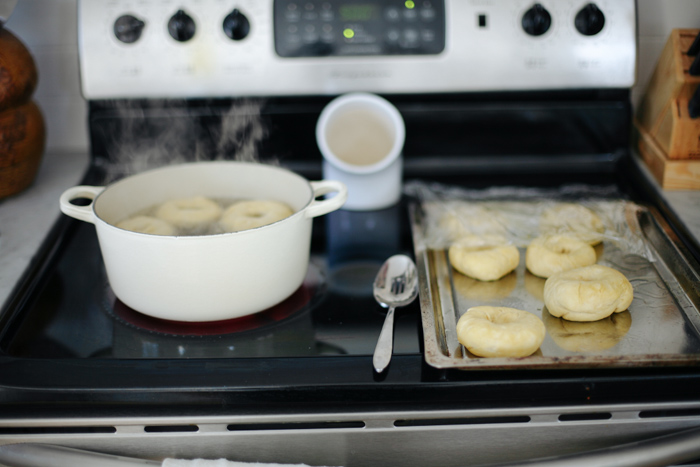
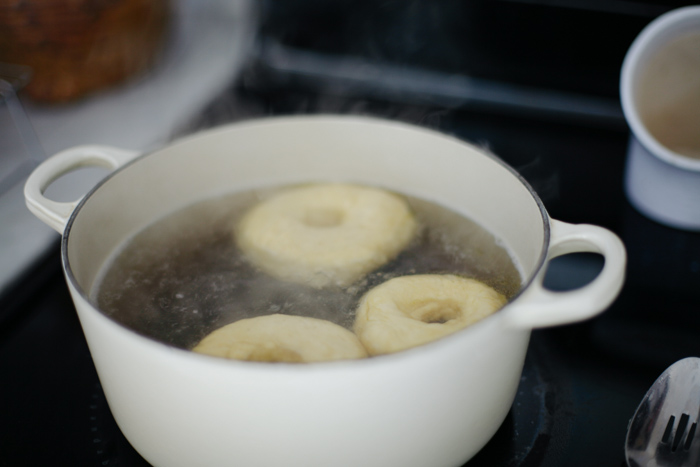
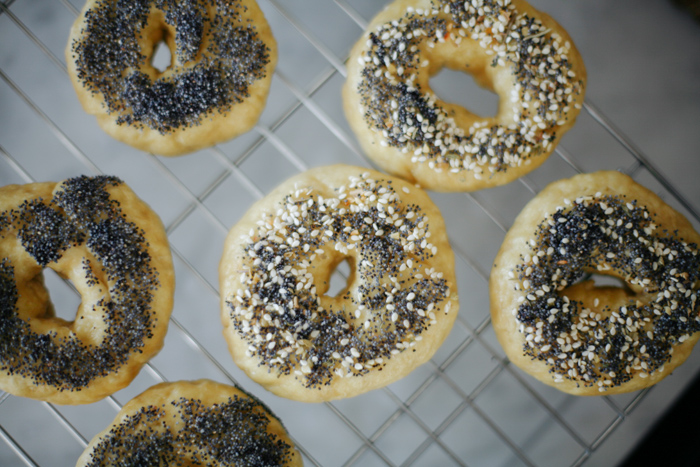
The trick to discover the magic of homemade bagels that overwhelms the sense of hassle is to go into it expecting a long and arduous baking project. You’ll have to start the night before, and then you’ll need to be around for the whole morning if you want to have bagels by lunch.
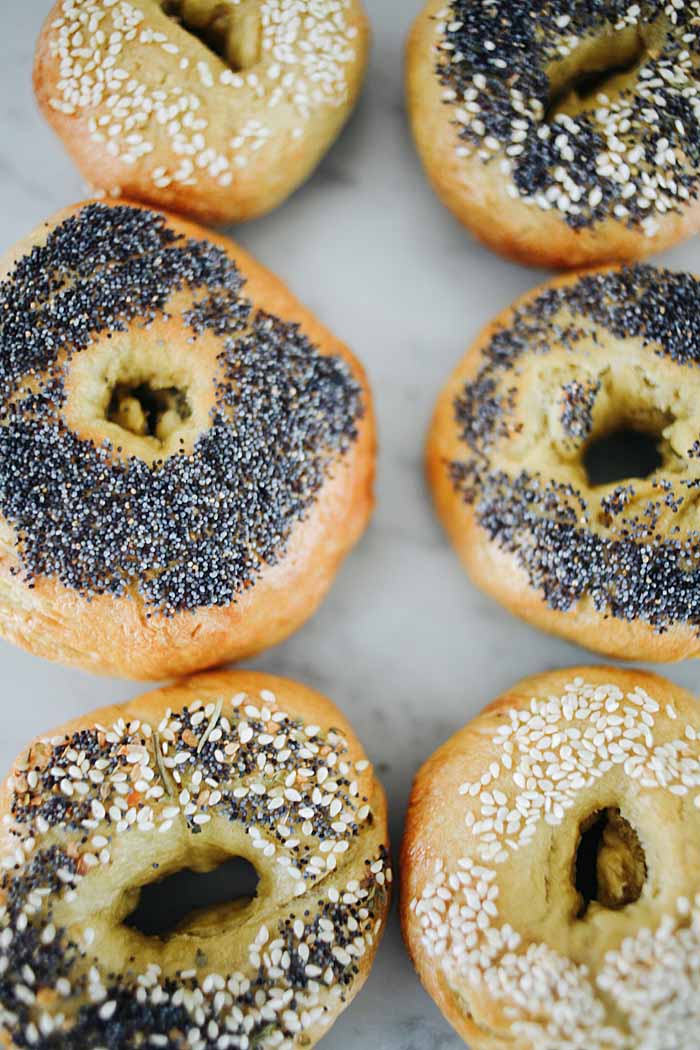
So much time! Other people buy bagels at the store! Of course, I could also tell you the end reward will be worth it, that homemade bagels are as gasp-inducing as the year’s first snow, but I’d rather you go into it like I did: expecting little, wondering why you should bother, so you can likewise see the incredible results before your very own eyes.
If you’ve never heard of einkorn, it’s an ancient form of wheat that was one of the first used when humans switched from hunting and gathering to agriculture.It hasn’t been hybridized, has fewer chromosomes than modern wheat, and doesn’t have the D genome (which may be why many have problems with digestion of modern varieities). We discuss it in more detail here.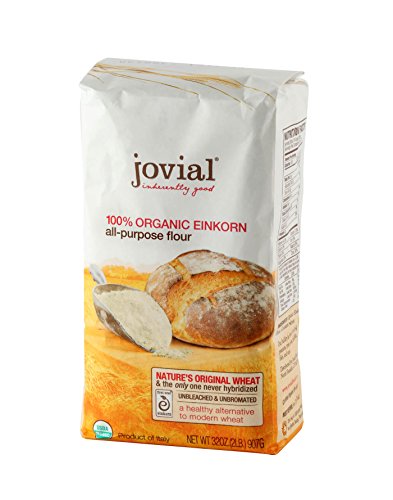
Jovial Foods Organic Einkorn Flour via Amazon
You can buy it preground like conventional wheat flour, or grind your own using a home grain mill.

Homemade Einkorn Bagels
- Total Time: 9 hours, 15 minutes
- Yield: 10 bagels 1x
Description
Though they take some preparation, these homemade bagels are as good as any from New York City, slightly crispy on the outside and with just the right amount of softness and chewiness inside. And they are made with einkorn flour so they are easier to digest than conventional wheat-based bagels.
Ingredients
For the 1 cup (250 g) of Yeast Levain:
- 1 cup (120 g) einkorn flour (all purpose or, 1 1/4 cups whole grain)
- 1/2 cup plus 1 tablespoon (130 g) warm water, about 100°F
- Pinch of active dry yeast
For the Bagels:
- 3/4 cup (177 g) warm water, at 100°F
- 2 teaspoons pure maple syrup
- 4 1/2 cups (540 g) all-purpose einkorn flour
- 2 teaspoons fine sea salt
- Olive oil, for brushing the baking sheet
- 1 teaspoon baking soda
For the Toppings:
- Sesame seeds, poppy seeds, garlic, Italian herbs, etc. (optional)
Instructions
The night before, make your yeast levain. (Rests 6-8 hours)
- Mix together warm water and a pinch of yeast in a medium-sized bowl, until yeast dissolves.
- Add flour and stir until combined. Cover the bowl with plastic and leave it on the counter overnight, or for 6-8 hours.
In the morning, make your dough. (Rests 2-3 hours)
- Your levain should have bubbles on the surface. Stir in an additional 1/4 teaspoon of yeast. To the levain, add the water and maple syrup, and stir until combined.
- In a large bowl, combine the flour and salt. Add the liquid levain mixture to the flour, set aside the bowl used to hold the liquids, and stir everything together with a stiff spatula as thoroughly as you can.
- Next, get your hands in there, pushing and pressing the dough together until it’s sort of a solid, craggy mass. Turn mixture out onto a clean work surface, and knead it by hand briefly until the dough starts to feel a little sticky. If you’re feeling discouraged, take heart: this is the hardest part of the process.
- Lightly oil the bowl that previously had the liquids in it, and place the ball of dough inside. Cover tightly with plastic wrap. Let proof for 2-3 hours in a warm place or, during the winter, the closest thing to warm you have.
Shape the dough. (Rests 45 minutes)
- Brush a baking sheet lightly with olive oil. Transfer the dough to a clean work surface and divide it evenly into 10 equal pieces (a bench scraper works great here). Roll the pieces into balls and then use your thumb to push up and through the middle, pressing the dough around the sides to create a ring that resembles a bagel.
- Place the shaped dough on the prepared baking sheet and cover lightly with plastic wrap. Stretch out the plastic on the counter, brush it with oil, and then placing it oil-side-down over the baking sheet.
- Let rest 45 minutes. Meanwhile, put baking stone(s) (if you have them; if you don’t, use a baking sheet) in the oven and preheat the oven to 500°F.
Boil the dough. (Rests 30 minutes)
- Use a large stockpot to bring 2 quarts of water to a barely boiling simmer on the stove. Add the baking soda. The mixture will foam up a little and then subside. At this point, increase the heat to bring the water to a rolling boil.
- Take one of your prepared bagels and drop it in the boiling water. It should float up to the surface pretty quickly. If it doesn’t, stop everything and let the bagels proof for another 30 minutes.
- If it does rise, go ahead and start boiling your bagels. Working in batches of three at a time, give them 45 seconds on one side, then use a slotted spoon to flip them to the other side and continue to boil for 20 seconds more. Then use the same spoon to lift them out of the water and onto a cooling rack.
- Let the bagels rest for about 2 minutes, and then press them into plates of whatever toppings you like.
Bake. (Takes about 13 minutes)
- Last step! Put the shaped and boiled dough directly onto your heated baking stones. I found that using pot holders to move out the racks holding the baking stones made it easiest to put the shaped dough right on top without burning myself. Bake for 13 minutes, or until shiny and golden on top.
- Remove from the oven and allow to cool for 10-15 minutes on cooling racks. Serve with cream cheese, or your favorite spread and toppings.
Notes
Recipe adapted from Jovial Foods.
Nutritional information below does not include optional toppings.
- Prep Time: 20 minutes
- Cook Time: 25 minutes
- Category: Bagels
- Method: Baking
- Cuisine: Breakfast
Keywords: einkorn, bagel, breakfast, artisan bread
What about you? Did you make these and love them as much as we did? Let us know in the comments below, and please rate the recipe!
And if you are a fan of einkorn wheat, then you’ll enjoy these recipes:
- Maple Blueberry Coconut Oil Scones Made with Einkorn Flour
- Einkorn Rye Chocolate Chip Pancakes
- Salted Rosemary Einkorn Breadsticks
Photos by Shanna Mallon, © Ask the Experts, LLC. ALL RIGHTS RESERVED. See our TOS for more details. Product photos via Jovial. Originally published on January 9, 2017. Last updated: December 29, 2019 at 9:22 am.
Nutritional information derived from a database of known generic and branded foods and ingredients and was not compiled by a registered dietitian or submitted for lab testing. It should be viewed as an approximation.
About Shanna Mallon
Shanna Mallon is a freelance writer who holds an MA in writing from DePaul University. Her work has been featured in a variety of media outlets, including The Kitchn, Better Homes & Gardens, Taste of Home, Houzz.com, Foodista, Entrepreneur, and Ragan PR. In 2014, she co-authored The Einkorn Cookbook with her husband, Tim. Today, you can find her digging into food topics and celebrating the everyday grace of eating on her blog, Go Eat Your Bread with Joy. Shanna lives in Nashville, Tennessee, with Tim and their two small kids.

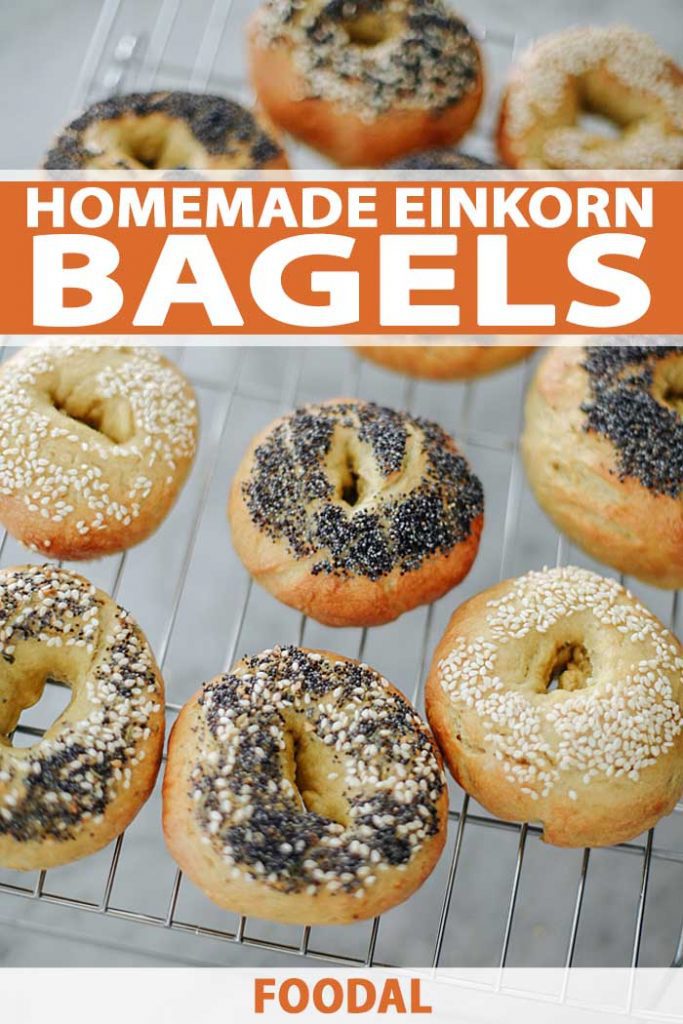

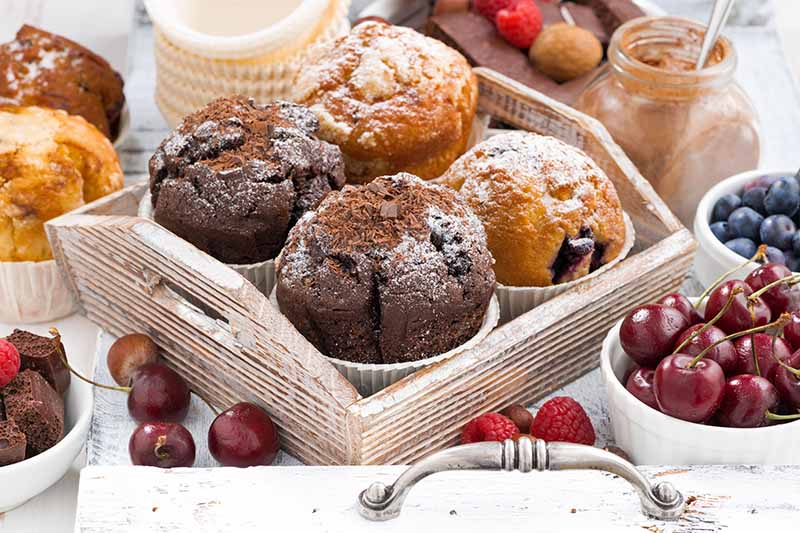
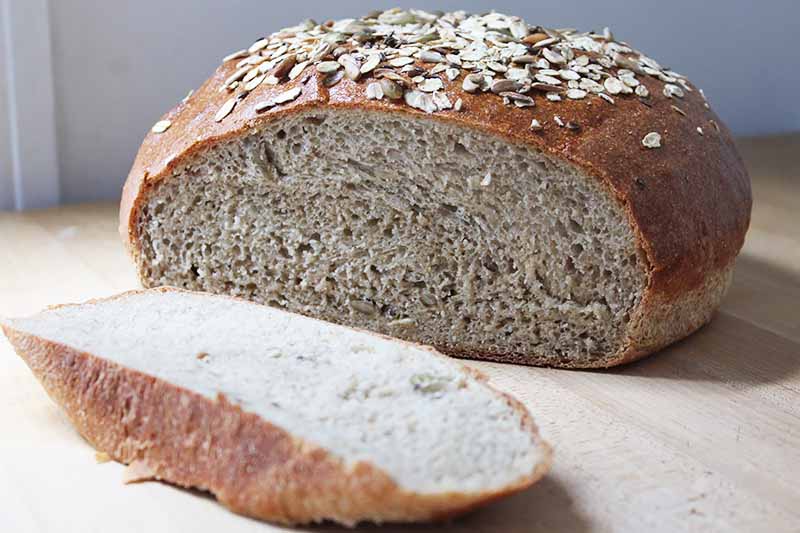
I’m writing the Elizabeth Goudge quote in my journal now. Each snowflake truly is a “wonder of the world.” I just finished Hannah Anderson’s Humble Roots. Made for More is on my TBR list. I’ve never heard of ‘From the Frontporch’, but if you like it then I’m bound to love it too. Have you ever heard of the English author Rosamunde Pilcher? I just finished one of her novels and I’m smitten.
No, I haven’t, but I just looked her up now and I’m in! Adding her to my list. Thanks, Emmie! xx
I ended up doing the recipe as is this first time. Once I sat down and wrote down the day and time that I would need to do each step, it didn’t seem like as much work… and it really wasn’t. I seemed to do well with all of the rises, but I didn’t get any rise in the oven (do you?) and they came out flatter than the ones that you have pictured. They tasted very good, though. I’m wondering if when I shaped the bagels and put the hole in them, I stretched them out and didn’t leave them thick enough? Thanks for the fun recipe – my son has been asking for bagels with seeds
Oh, yay, I’m so glad you got to try them! I don’t know what happened with the thickness.. if they didn’t seem like they raised at all throughout the process, I wonder if your yeast wasn’t active? Otherwise, maybe it’s just a matter of trying to form them taller upfront.
look very attractive, you really skillful
I just bought your Einkorn Cookbook and finished reading it this morning.
When I return home to my own kitchen I will be trying a few of your wonderful recipes.
My question: I have a grain mill and for years I have purchased sacks of wheat and ground my own flour for bread, cakes, cookies, etc. I typically use hard white wheat.
So with the mill, my first choice is to grind my own flour from purchased Einkorn, rather than buy Einkorn APF. Is it okay to use ground flour for all your recipes, which of course would be whole grain?
Hi Ciel, Yes! Stick to the same weight in grams whichever einkorn flour you’re using, and the recipes should still work. Best wishes! -s
I’m a bagel enthusiast and connoisseur; these bagels are awesome! I had to try one piping hot straight from the oven – one turned into 3.
My only gripe was that the outside crust didn’t come out as smooth looking as yours did, there are tiny indentations all over it. Any suggestions?
Awesome! I totally relate to wanting three instead of one. Bummer about the bumpiness, though. The only thing I would guess is that maybe it has to do with the forming? i wonder if you tried it again and focused on smoothing them out pre-boil, if that might help?
Looks like something the kids would looove, thank you!
Wow this recipe is perfect! I’ve been scared to try homemade bagels with Einkorn since our family loves bagels and I was afraid to ruin them…. but I am so glad I overcame and tried this. THIS is what bagels should taste like! the flavor and textures were absolutely delicious! They cut in half so well and I was able to spread my cream cheese on them. Thank you so much for sharing this recipe, my children are happy little campers now! God bless you!
★★★★★
Can you extend the 2-3 hour proof to an overnight proof or put it in the fridge so the remaining portion doesn’t take so long in the morning for them to be ready? Or will the extended proofing period have negative results? Thanks!
Extending this period at room temperature is likely to result in overproofing, but I don’t see why you couldn’t switch to cold fermentation in the fridge overnight for advance prep so they’ll be ready to bake more quickly in the morning. You can cold proof for 36 hours or more. Just remember that you will also need to allow time for the dough to return to room temperature whenever you pull it out of the fridge.